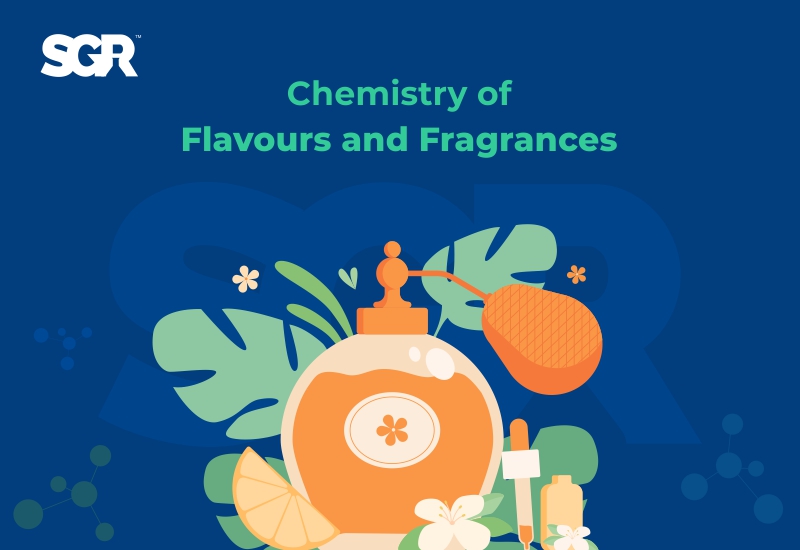
Chemistry of Flavours and Fragrances
October 15, 2023
Flavour and fragrance compounds are volatile chemicals that are perceived by our senses of smell and taste. They are found in a wide variety of natural and synthetic products, including food, beverages, cosmetics, and perfumes.
Flavours are the sensations we experience when we eat or drink something. They are the result of a complex combination of factors, including the taste, texture, and smell of the food or beverage. The taste of food is perceived by taste buds on the tongue, while the smell of food is perceived by olfactory receptors in the nose.
Fragrances are the sensations we experience when we smell something. They are also the result of a complex combination of factors, including the chemical composition of the fragrance and the individual's sense of smell.
The chemistry of flavours and fragrances is a complex and fascinating field of study. Scientists have identified hundreds of different flavour and fragrance compounds, and they continue to discover new ones all the time.
Natural Flavour and Fragrance Compounds
Many flavour and fragrance compounds are found naturally in plants. For example, the flavour of strawberries is due to a compound called methyl anthranilate. The fragrance of roses is due to a compound called citronellol.
Natural flavour and fragrance compounds can be extracted from plants using a variety of methods, including distillation, solvent extraction, and supercritical fluid extraction.
Synthetic Flavour and Fragrance Compounds
Many flavour and fragrance compounds are also synthesized in the laboratory. This is necessary because some natural compounds are too expensive or difficult to extract in large quantities.
Synthetic flavour and fragrance compounds are often made from petrochemicals, which are derived from petroleum. However, there is a growing interest in developing sustainable sources of synthetic flavour and fragrance compounds, such as renewable biomass.
How Flavour and Fragrance Compounds Work
Flavour and fragrance compounds work by interacting with specialized receptors on the tongue and in the nose. When a flavour or fragrance compound binds to a receptor, it triggers a signal that is sent to the brain. The brain then interprets the signal as a taste or smell.
The different types of flavour and fragrance compounds interact with different receptors. This is why different foods and beverages have different flavours and fragrances.
Applications of Flavour and Fragrance Chemistry
Flavour and fragrance chemistry is used in a wide variety of industries, including:
- Food and beverage industry: Flavour and fragrance compounds are used to enhance the taste and smell of food and beverages.
- Cosmetic and perfume industry: Flavour and fragrance compounds are used to create perfumes, colognes, and other cosmetic products.
- Household products industry: Flavour and fragrance compounds are used to create candles, soaps, and other household products.
- Pharmaceutical industry: Flavour and fragrance compounds are used to make medicines taste and smell better.
Conclusion
Flavour and fragrance chemistry is a fascinating field that has a wide range of applications. By understanding the chemistry of Flavors and Fragrances, scientists and technologists can create new and innovative products that enhance our senses of taste and smell.
Shree Ganesh Remedies Limited is one of the leading manufacturers of intermediates and specialty chemicals related to fragrances and flavours.
Specialty Chemicals by Shree Ganesh Remedies Limited